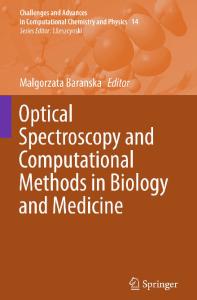Fractals in Biology and Medicine
This volume is number four in a series of proceedings volumes from the International Symposia on Fractals in Biology and Medicine in Ascona, Switzerland which have been inspired by the work of Benoît Mandelbrot seeking to extend the concepts towards the l
- PDF / 1,159,770 Bytes
- 14 Pages / 467.717 x 666.142 pts Page_size
- 7 Downloads / 313 Views
Summary. The concept of fractal geometry advanced by Mandelbrot since 1977 has brought new insight into the design of biological structures. Two fundamental geometrical forms abound: interfaces between different compartments with a very large surface within finite space, and branched trees that distribute blood and air into the tissue space. These structures show a level of complexity that is best described by fractal geometry. Thus, the surface area of cellular membranes as well as the gas exchange surface of the lung have a fractal dimension which is larger than 2. The design of the airway tree is described in quantitative terms and the functional consequences are discussed, both with respect to airflow in the bronchi and gas exchange in the acini. Similar conditions are described with respect to the blood vascular network. It is finally discussed whether fractal geometry plays a role in designing animals of greatly different body size from 2 g in a shrew to 500 kg in horses and steers. The scaling exponent of 3/4 for metabolic rate has been explained on a basis of two fractal models, but it is shown that this does not hold for maximal metabolic rate which is directly proportional to the surface of inner mitochondrial membrane that in turn has fractal properties. The concept of fractal geometry is valuable in understanding the design of biological structures at all levels of organization.
1
Introduction
I first met Benoît Mandelbrot in 1977 in Paris at a symposium on "Geometric probability and biological structures" organized to commemorate 200 years of the Buffon needle problem, the first exercise in geometrical statistics [1]. Mandelbrot was one of the keynote speakers (Fig. 1). It was the year in which he published his book "Fractals: Form, Chance and Dimension" [2] which marked the beginning of a new way of describing the structure of natural objects. It turned out that Mandelbrot's concept of fractal geometry gained significant influence on the way we now describe the geometric design of living systems, of what forms the geometry of life. But it also had a significant impact on the further development of a quantitative approach to the study of internal life forms with the methods of stereology. The Buffon symposium was related to the theoretical foundations of stereology, but it was somehow akin to the concept of fractals. In 1777, the great naturalist Buffon asked the French Academy of Sciences: what is the probability P that a randomly tossed needle of length l intersects a set of parallel lines spaced at an equal distance d, e.g. the seam lines of a parquet floor? Buffon solved the problem himself: considering the chances to have the needle at different orientations (angles) and different distances from the lines he derived P = (2/ʌ)·(l/d). The further developments of this principle have led to stereological methods by which, for example, the surface area of membranes is estimated by probing the tissue with needles [4]. The Buffon needle problem thus was perhaps the first realization of "Form, Chance and
Data Loading...











